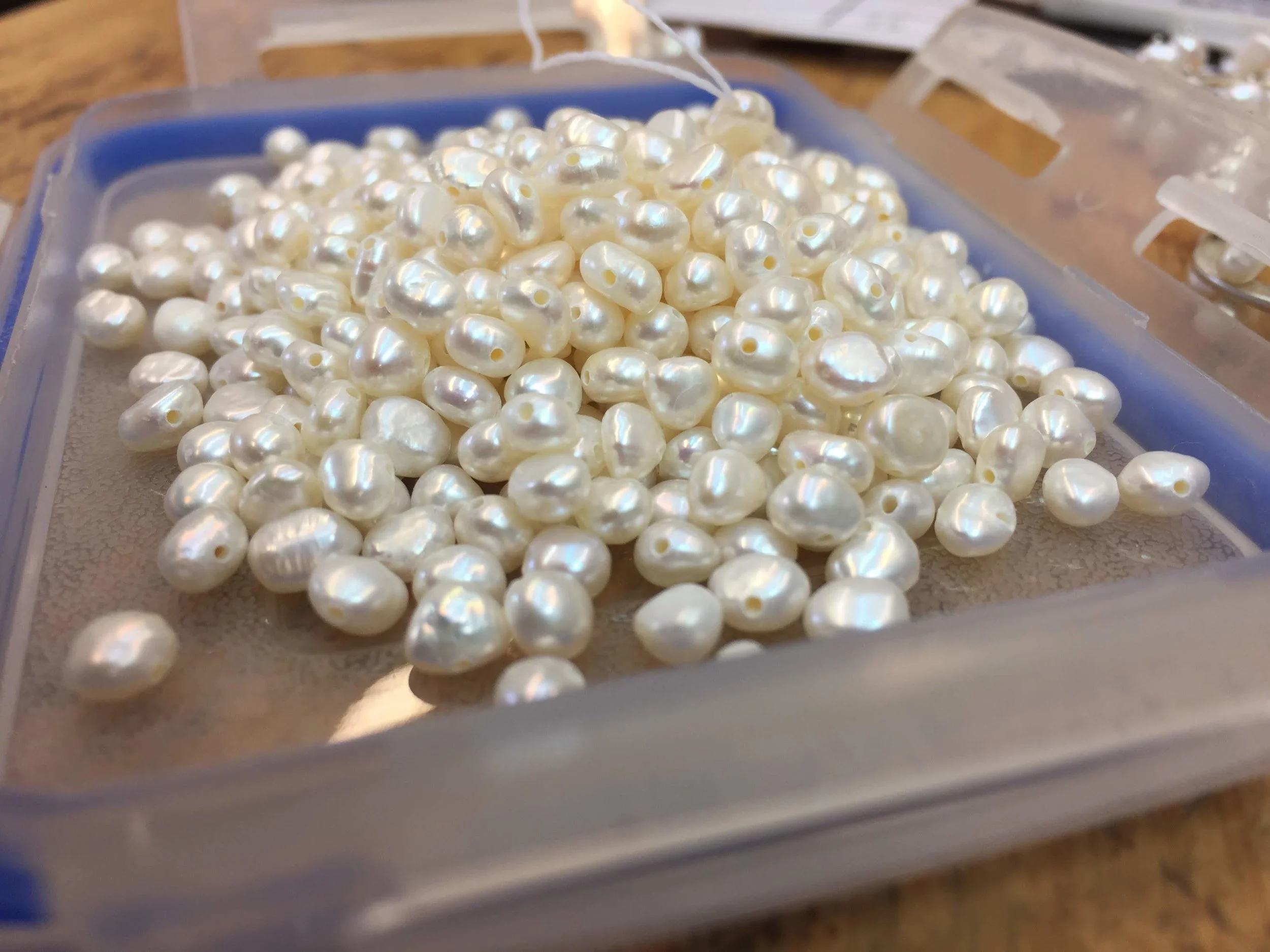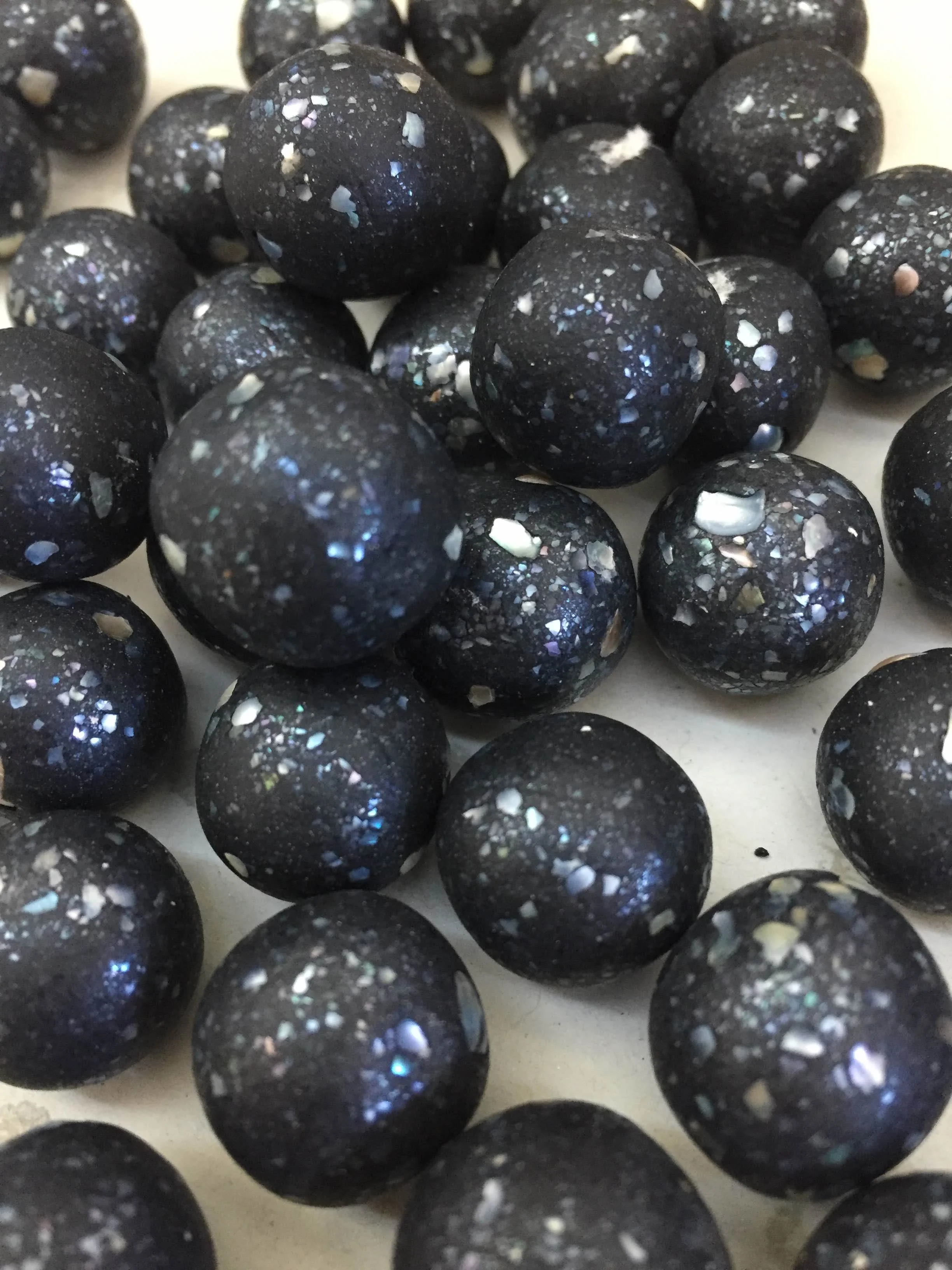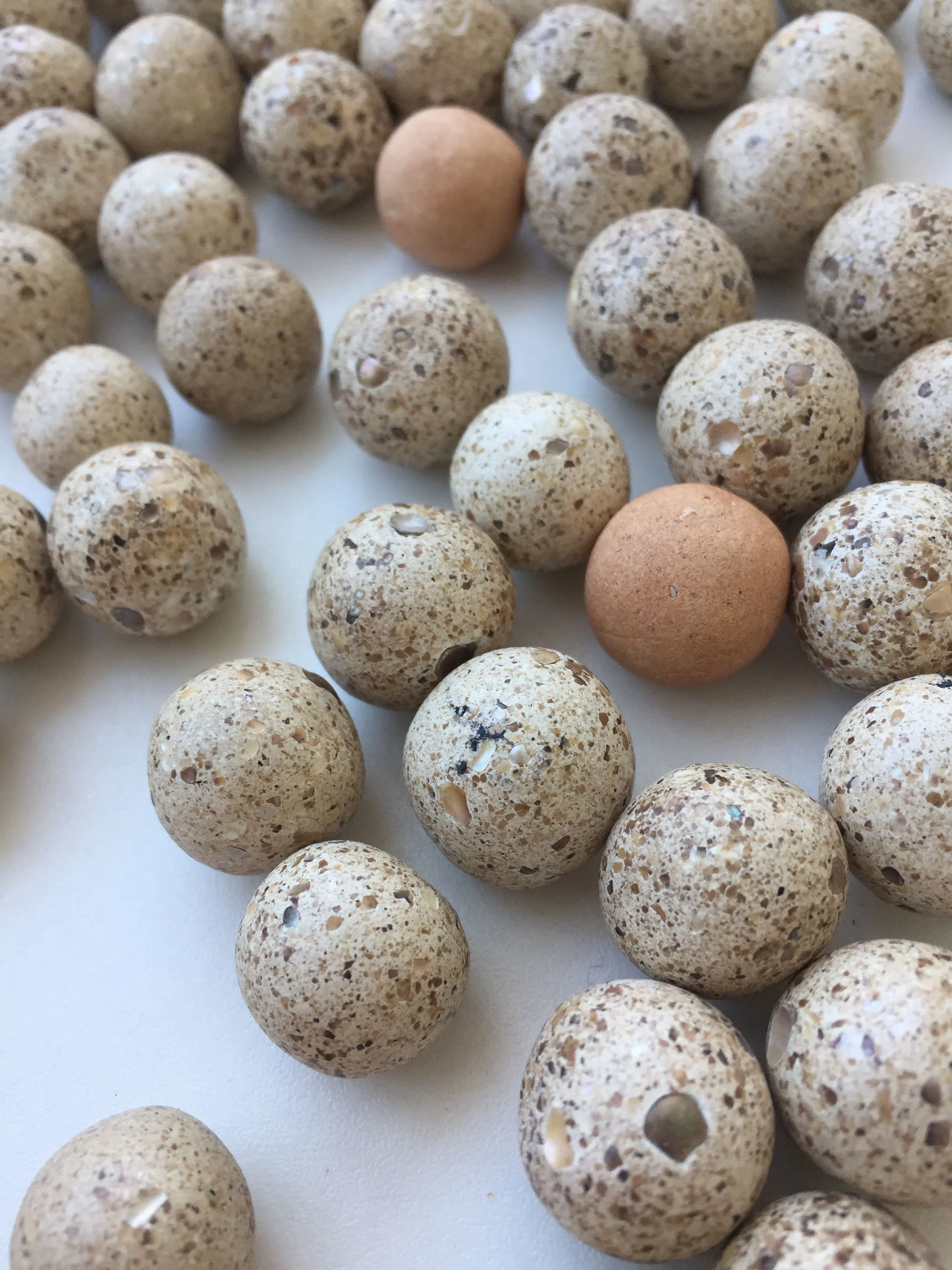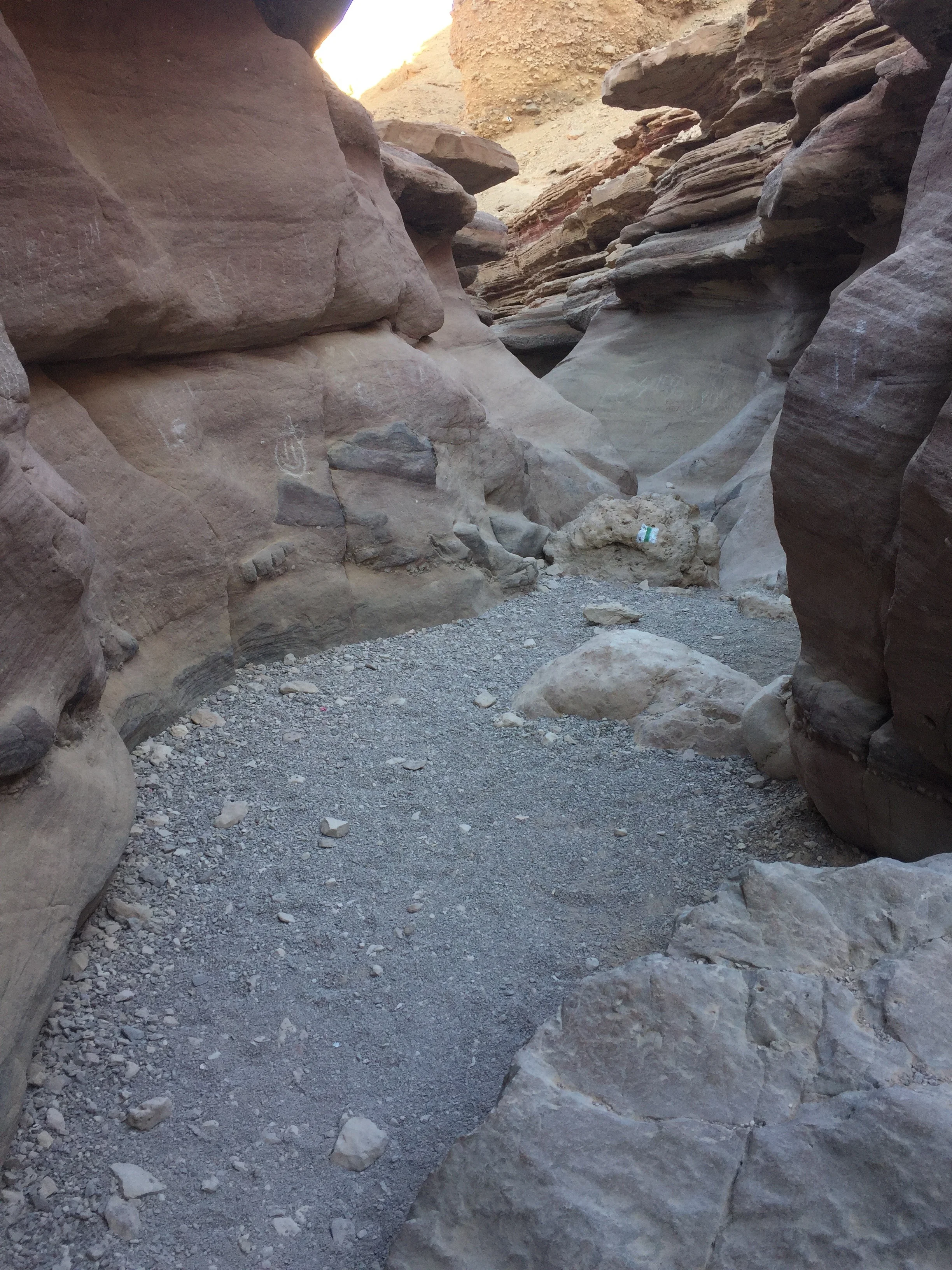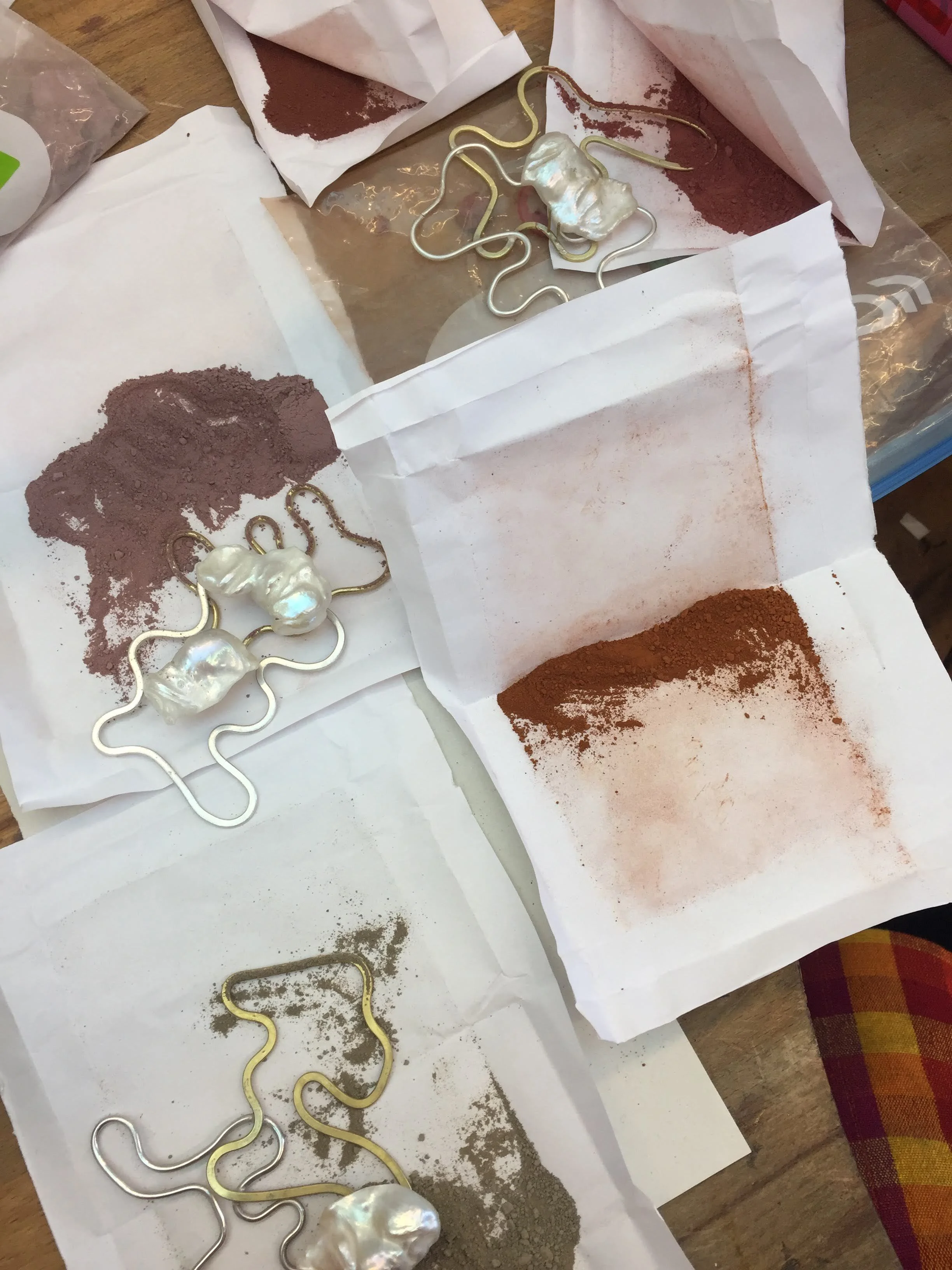This was the first piece I started out making, but it was probably only about half way through making the entire collection that I actually finished it. I was inspired by one line in the book. Just one line.
Why pearls feature so much in my work
Pearls are special, I’ve always been drawn to them. But only the natural ones. Those synthetic glass and plastic ones don’t do anything for me.
I’m not too sure why that is the case. Though I have a feeling it’s partly because of its rich history, and the fact that it’s nature’s easiest gemstone to use. You literally pick it out from its animal host and maker, and it’s ready for use.
But what about gemstones like garnets and emeralds, you ask? They’re great too! But they need to be cut and polished to bring out the shine and the colour. Pearls don’t need any of that. Like how I would like forests to be, I like my pearls au naturel.
With regard to the history of the pearl, I highly recommend this book from the reading list I put up a while ago. It’s called Pearls: Ornament and Obsession, by Kristin Joyce. It’s fascinating.
Encapsulating the universe in a bead
I made these beads by hand. They’re made from a very robust binder and crushed, burnt pearls. They remind me of egg shells and the night sky, and how everything is so delicate and ephemeral.
A Reading List
Throughout the course of researching my 4th year project, I’ve gone through so many resources. Here’s a list of some of the books I found particularly helpful. Enjoy!
Pearls : ornament and obsession
Joyce, Kristin
The thing of mine I have loved best : meaningful jewels
Hahn, Cynthia
Clasps : 4,000 years of fasteners in jewellery
Tabakhvoa, Anna
Toward an art history of Medevial rings : a private collection
Handyman, Sandra
Jewellery in ancient times
Rosenthal, Renate
Cræft
Alexander Langlands
Earth colours
All the earth used in this collection are from sites in Israel (with permission). Sand usually looks like sand until we put them side by side and realise the subtle differences between them. Their textures, colours and sizes. I’m not sure about you, but it makes me wonder and marvel at this planet. And it makes me realise how beautiful the world around us is, particularly in the small things that are so easily overlooked. Working with the earth reminds me of where we come from, and it reminds me to gaze and enjoy the present.
The mould making process
There are quite a few techniques that can be applied when casting. In this case, to make this specific necklace in question, the technique of lost wax casting was used, and because multiples of the same pieces were made, moulds had to be made. This is a brief overview of the process (follows the images above).
Make ‘investment’ pieces. This refers to the original silver piece that you want to make multiples of. It has to be as perfect as it can be because the mould picks up everything. And I mean everything. All the little scratches included.
Attach sprues. This is the metal stick attached to the larger bits with the waves (1st image)
Cut rubber sheets to the size of the mould (that rectangular steel thing). We needed about 10 sheets to fill one mould. At the same time, turn on the heat pressure machine (I don’t know what it’s called, sorry!)
Layer up the rubber sheets, with the silver investment piece in the middle
When the machine has heated up enough, place mould in between heated plates, and roll till the two plates are firmly compressing the mould. Leave for 20 minutes.
Go back to the machine and tighten the wheel, increasing the pressure applied on the mould. Leave for another 30-40 minutes.
It’s very hot at this stage, so specialised gloves are needed. Release the pressure on the mould and remove to a safe location for cooling (probably overnight)
Pull the rubber mould out of steel block, and cut (there’s a technique to this too!) the investment piece out.
Dust baby powder onto the moulds and inject wax to create wax models of investment piece.
Cast the wax pieces
Of course, to cast, there’s the other process of sprueing it to the tree and all that jazz, but that’s for another time!
If you're needing inspiration, or considering working with me
Who inspires me
| if you’re needing inspiration or considering working with me
I thought I’d start with a list of creative people that inspire me.
Heather Day, for the way she writes about her work, and the way she thinks through colours, marks and gestures.
Hana Louise Shahnavaz, for her openness to share her knowledge.
Stella Maria Baer, for her colour palette.
Sarah Jerath, for the materials she uses.
Dalan Hargrave, for the intricacy of his work.
Chiara Zonca, for her beautiful landscapes.
Sha’an d’Anthes, for the fun and sunshine she brings.
This list is by no means an exhaustive one, there are definitely more people who make crazy amazing work that inspires me, but these people, are the ones I go back to time and time again. They inspire me creatively, and in my practice and process. But these are the big picture inspirations, the ones that influence in general, overarching ways.
The other kind of inspiration that influences me greatly, but in a quieter, more personal way, are people closer to home. And by home, I don’t mean an actual physical location, I mean, people I personally know (or will come to know). They are the ones with stories to tell, stories to remember and stories to inspire. That’s one story btw, their stories all have the capacity to do all three. And so does yours. Your story, if you let it, can be told, be remembered and can inspire.
Mull on that thought for a bit. Your story, if you let it, can be told, remembered and can inspire.
When storytelling became all I wanted to do
When storytelling became all I wanted to do
| about the journey to getting here
I started my journey in storytelling when I realised that the best chance an object has of staying valued, is in its story. The thought process, when written out, resembles a spiderweb with many arrows.
Each arrow took quite a bit of time, lots of questions and random answers, also conversations and encounters. But at the end of it, I realised that stories are a big part of our lives. We’re told stories from a young age, and we’re telling stories from when we started to talk. It’s important because we know our history and our heritage from our stories, and from that, we can also see our future.
Anything can be an heirloom. As I was researching and writing my paper for uni, I realised an heirloom is anything that has been passed from one generation to the next. And things are always passed on because they mean something, because they have a backstory.
So here I am, making jewellery with stories so that we don’t forget. I make jewellery because I want to remember and from remembering, to inspire. And in creating jewellery like that, I’m not making jewels that will be consumed and discarded quickly, and that helps our planet with its waste problem in an infinite number of ways.
Knowing the source
Where do these objects come from
| see where each tiny part is from
Everything we have comes from somewhere. Materials had to be sourced, made, and sometimes purified. That object already has a book of stories in its materials and its production before it even reaches your hands. So too, does every piece of jewellery I make. Here’s an insight into some of the stories of the materials you’ll regularly see here.
Silver -
A precious metal, mined as a by-product of other things. No one ever starts mining with the sole intention of extracting silver because they always come in such small quantities. Most silver is recycled because like gold, the waste is melted down to form whole sheets and wires. But there’s usually always freshly mined metal added in.
The silver used here is, as much as possible, Ecosilver. Ecosilver bullion (sheet, wire, tube, etc) is certified to be produced in a closed loop, meaning the metal is 100% post consumer recycled. It’s the exact same as the usual sterling silver you get in the stores, just with the guarantee that it’s definitely not freshly mined.
Pearl -
People sometimes ask “these are real pearls?”, and I always answer, “yes, they are”. It’s not a lie, and I do explain myself. Almost all the pearls we get on the market today are real, natural pearls that have grown inside an animal. The only difference between these and the ones nobility wore in the Tudor era are that those pearls they used were actually grown by the mollusk as a defence mechanism from a parasite (not a grain of sand, sorry!), not a man made seed.
In cultivating pearls, pearl farmers have to keep waters pristine in order to keep their molluscs alive. It is also obviously to their advantage to keep them alive. And because of that, not only do they take care of their animals, they also ensure the environment is in tip top condition, and none of the animal gets wasted. The flesh becomes food, the pearls cultivated and the shells become mother of pearl pieces for all sorts of things, including inlay in guitars and furniture!
Earth -
The earth used in this collection is collected from sites in Israel (with permission). It reminds me of the beauty all around us, and it provides a sense of connection to this earth that we’ve grown so out of touch with, especially when living in cities.
The fact that it’s from Israel is important because the journey that inspired the collection did actually take place in Israel. If not in Israel, in the immediate area around it. Can you imagine, these two brave women walked the same sand you’re wearing! What an honour.


